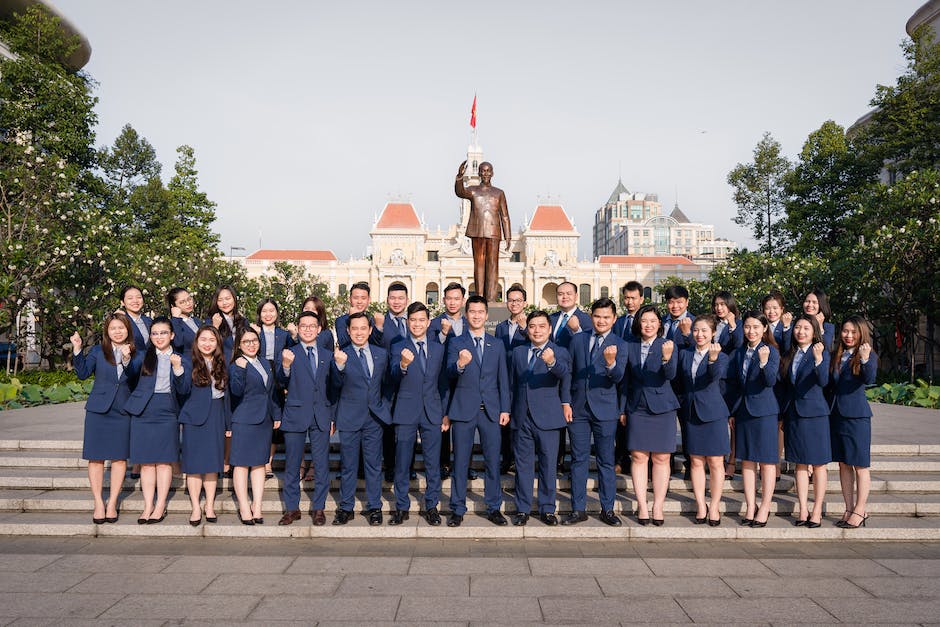Table of Contents
- Introduction
- Key Elements of General Electric’s Succession Strategy under Immelt’s Leadership
- Analyzing the Impact of Immelt’s Succession Strategy on General Electric’s Performance
- Lessons Learned from General Electric’s Succession Strategy during the Immelt Era
- Exploring the Long-Term Implications of General Electric’s Succession Strategy under Immelt
- Q&A
- Conclusion
The Immelt Era: Paving the Path to Success
Introduction
General Electric’s Succession Strategy during the Immelt Era focused on ensuring a smooth transition of leadership and maintaining the company’s growth and profitability. Under the leadership of Jeff Immelt, who served as CEO from 2001 to 2017, General Electric implemented a comprehensive succession plan to identify and groom potential successors, while also addressing the challenges and opportunities faced by the company. This strategy aimed to ensure continuity and stability in leadership, while also adapting to the changing business landscape and driving innovation and growth.
Key Elements of General Electric’s Succession Strategy under Immelt’s Leadership

General Electric (GE) is a multinational conglomerate that has been a dominant force in the business world for over a century. One of the key factors contributing to its success has been its effective succession strategy. Under the leadership of Jeff Immelt, who served as CEO from 2001 to 2017, GE implemented a succession plan that focused on several key elements.
First and foremost, Immelt recognized the importance of developing a strong leadership pipeline within the company. He understood that in order to ensure a smooth transition of power, it was crucial to have a pool of talented individuals who were ready to step into leadership roles when the time came. To achieve this, Immelt implemented a rigorous talent development program that identified high-potential employees and provided them with the necessary training and development opportunities to prepare them for future leadership positions.
Another key element of GE’s succession strategy under Immelt’s leadership was the emphasis on diversity and inclusion. Immelt understood that in order to thrive in an increasingly globalized and diverse business environment, GE needed leaders who could bring different perspectives and experiences to the table. As a result, he actively sought out and promoted individuals from diverse backgrounds, ensuring that the company’s leadership team was representative of the customers and communities it served.
In addition to developing a strong leadership pipeline and promoting diversity, Immelt also recognized the importance of continuity in leadership. He believed that in order to maintain the company’s momentum and drive long-term success, it was crucial to have a smooth transition of power from one CEO to the next. To achieve this, Immelt implemented a structured CEO succession planning process that involved identifying potential successors, grooming them for leadership roles, and providing them with opportunities to gain experience and exposure to different parts of the business.
Furthermore, Immelt understood the importance of aligning the company’s succession strategy with its overall business strategy. He recognized that in order to drive growth and innovation, GE needed leaders who not only had the necessary skills and experience but also shared the company’s vision and values. As a result, he placed a strong emphasis on cultural fit when selecting and developing future leaders, ensuring that they were aligned with GE’s mission and committed to driving the company forward.
Lastly, Immelt recognized the need for transparency and communication throughout the succession process. He understood that uncertainty and speculation could be detrimental to employee morale and investor confidence. To address this, he made a concerted effort to keep employees and stakeholders informed about the succession plan, providing regular updates and ensuring that there was a clear and transparent process in place.
In conclusion, General Electric’s succession strategy under Jeff Immelt’s leadership was characterized by several key elements. These included developing a strong leadership pipeline, promoting diversity and inclusion, ensuring continuity in leadership, aligning the succession strategy with the business strategy, and maintaining transparency and communication throughout the process. By focusing on these elements, GE was able to successfully navigate leadership transitions and position itself for continued success in the ever-changing business landscape.
Analyzing the Impact of Immelt’s Succession Strategy on General Electric’s Performance
General Electric (GE) is a multinational conglomerate that has been a dominant force in the business world for over a century. Throughout its long history, GE has experienced various leadership transitions, each with its own unique impact on the company’s performance. One of the most significant succession strategies implemented by GE was during the tenure of Jeffrey Immelt, who served as the CEO from 2001 to 2017. This article aims to analyze the impact of Immelt’s succession strategy on General Electric’s performance.
Under Immelt’s leadership, GE underwent a significant transformation. Immelt recognized the need for GE to adapt to the changing business landscape and focused on diversifying the company’s portfolio. He shifted the company’s focus from traditional industrial businesses to high-growth sectors such as healthcare, renewable energy, and digital solutions. This strategic shift was aimed at positioning GE for long-term success in a rapidly evolving global economy.
One of the key aspects of Immelt’s succession strategy was the emphasis on developing internal talent. He believed in nurturing and promoting employees from within the organization, rather than relying on external hires. This approach was intended to foster a culture of loyalty and commitment among GE employees, while also ensuring a smooth transition of leadership when the time came.
To implement this strategy, Immelt established various leadership development programs within GE. These programs provided employees with opportunities for growth and advancement, enabling them to acquire the necessary skills and knowledge to take on leadership roles within the company. By investing in the development of its own talent pool, GE aimed to create a pipeline of future leaders who would be well-equipped to drive the company’s growth and success.
Another significant aspect of Immelt’s succession strategy was his focus on diversity and inclusion. He recognized the importance of having a diverse leadership team that could bring different perspectives and ideas to the table. Immelt actively promoted diversity within GE, both in terms of gender and ethnicity, and made efforts to ensure that women and minorities were given equal opportunities for advancement.
The impact of Immelt’s succession strategy on General Electric’s performance was mixed. On one hand, the emphasis on diversification and the shift towards high-growth sectors proved to be beneficial for the company. GE’s revenue from its healthcare and renewable energy businesses grew significantly under Immelt’s leadership, contributing to overall revenue growth.
However, there were also challenges and setbacks during Immelt’s tenure. GE faced financial difficulties, particularly in its power division, which led to a decline in the company’s stock price. Critics argue that Immelt’s focus on diversification may have spread the company too thin, resulting in a lack of focus and strategic direction.
In conclusion, Jeffrey Immelt’s succession strategy had a significant impact on General Electric’s performance. His emphasis on diversification and internal talent development brought about positive changes within the company. However, there were also challenges and criticisms associated with his approach. Overall, Immelt’s tenure as CEO marked a period of transformation and adaptation for GE, as the company navigated the complexities of a rapidly changing business landscape.
Lessons Learned from General Electric’s Succession Strategy during the Immelt Era
General Electric (GE) is a multinational conglomerate that has been a dominant force in the business world for over a century. Throughout its long history, GE has experienced various leadership transitions, each with its own unique challenges and outcomes. One of the most notable succession strategies implemented by GE was during the tenure of Jeffrey Immelt, who served as the company’s CEO from 2001 to 2017. Immelt’s succession strategy offers valuable lessons for organizations seeking to navigate leadership transitions successfully.
One key lesson from Immelt’s succession strategy is the importance of long-term planning. Immelt recognized the need to groom potential successors early on, ensuring a smooth transition when the time came for him to step down. He implemented a rigorous talent development program that identified and nurtured high-potential individuals within the organization. This approach allowed GE to have a pool of qualified candidates ready to step into leadership roles when needed.
Another lesson from Immelt’s succession strategy is the significance of diversity in leadership. Immelt understood the value of having a diverse set of perspectives at the top of the organization. He actively sought out individuals from different backgrounds and experiences to join GE’s leadership team. This commitment to diversity not only enhanced decision-making but also helped GE better understand and serve its global customer base.
Furthermore, Immelt’s succession strategy highlighted the importance of adaptability and innovation. Under his leadership, GE underwent a significant transformation, shifting its focus from traditional industrial businesses to technology-driven sectors. Immelt recognized the need to adapt to the changing business landscape and invested heavily in research and development to drive innovation. This forward-thinking approach ensured that GE remained competitive and relevant in an increasingly digital world.
Additionally, Immelt’s succession strategy emphasized the need for effective communication and transparency. He understood that during times of leadership transition, employees and stakeholders can feel uncertain and anxious. To address this, Immelt made a concerted effort to communicate openly about the succession process, providing regular updates and opportunities for feedback. This transparency helped build trust and maintain employee morale throughout the transition.
Lastly, Immelt’s succession strategy demonstrated the importance of continuity and a smooth handover of responsibilities. He worked closely with his successor, John Flannery, to ensure a seamless transition of power. Immelt actively mentored Flannery, sharing his knowledge and insights to help him succeed in his new role. This collaborative approach ensured that GE’s operations continued uninterrupted and minimized any potential disruptions during the leadership transition.
In conclusion, General Electric’s succession strategy during the Immelt era offers valuable lessons for organizations navigating leadership transitions. The importance of long-term planning, diversity in leadership, adaptability, effective communication, and continuity were all key takeaways from Immelt’s approach. By implementing these lessons, organizations can increase their chances of successfully navigating leadership transitions and ensuring a smooth handover of responsibilities. As GE continues to evolve and face new challenges, the lessons learned from the Immelt era will undoubtedly remain relevant and valuable for years to come.
Exploring the Long-Term Implications of General Electric’s Succession Strategy under Immelt
General Electric (GE) is a multinational conglomerate that has been a dominant force in the business world for over a century. With a rich history and a reputation for innovation, GE has consistently been at the forefront of technological advancements. However, the company’s succession strategy has recently come under scrutiny, particularly during the tenure of former CEO Jeff Immelt. This article aims to explore the long-term implications of General Electric’s succession strategy under Immelt’s leadership.
Under Immelt’s guidance, GE underwent a significant transformation. He took over as CEO in 2001, succeeding the legendary Jack Welch, who had led the company for two decades. Immelt faced the daunting task of maintaining GE’s success in an increasingly competitive global market. To achieve this, he implemented a succession strategy that focused on developing internal talent and promoting from within the organization.
One of the key aspects of Immelt’s succession strategy was his emphasis on cultivating a diverse leadership team. He recognized the importance of having a variety of perspectives and experiences at the top of the organization. By promoting diversity, Immelt aimed to foster innovation and ensure that GE remained adaptable in an ever-changing business landscape.
Another crucial element of Immelt’s succession strategy was his commitment to developing future leaders within the company. He believed in the power of nurturing talent from within and providing them with the necessary tools and opportunities to succeed. Immelt implemented various programs and initiatives to identify and groom high-potential employees, ensuring a pipeline of capable leaders for the future.
However, despite these efforts, Immelt’s succession strategy faced criticism for its lack of transparency and perceived favoritism. Some argued that the process of selecting and promoting leaders within GE was shrouded in secrecy, leading to a lack of trust and morale among employees. This criticism was further exacerbated by the company’s declining performance during Immelt’s tenure, with GE’s stock price plummeting and its financial health deteriorating.
The long-term implications of Immelt’s succession strategy are still being debated. On one hand, his focus on diversity and talent development could potentially have positive effects in the future. By nurturing a diverse pool of leaders, GE may be better equipped to navigate the complexities of a globalized business environment. Additionally, the emphasis on internal talent development could lead to a more engaged and motivated workforce, driving innovation and productivity.
On the other hand, the lack of transparency and the perceived favoritism within the succession process may have long-lasting negative consequences. A lack of trust and morale among employees can hinder collaboration and impede the company’s ability to attract and retain top talent. Furthermore, the declining performance of GE under Immelt’s leadership raises questions about the effectiveness of his succession strategy and its impact on the company’s long-term success.
In conclusion, General Electric’s succession strategy under Jeff Immelt’s leadership had both positive and negative implications. While his focus on diversity and talent development may have long-term benefits, the lack of transparency and declining performance during his tenure raise concerns about the effectiveness of his approach. As GE continues to navigate the challenges of the modern business landscape, it remains to be seen how Immelt’s succession strategy will shape the company’s future.
Q&A
1. Who succeeded Jack Welch as CEO of General Electric?
Jeff Immelt succeeded Jack Welch as CEO of General Electric.
2. How long did Jeff Immelt serve as CEO of General Electric?
Jeff Immelt served as CEO of General Electric for 16 years, from 2001 to 2017.
3. What were some key aspects of General Electric’s succession strategy during the Immelt era?
During the Immelt era, General Electric focused on developing internal talent and promoting from within the company. They also emphasized diversity and inclusion in their leadership pipeline.
4. Did General Electric’s succession strategy during the Immelt era lead to long-term success?
General Electric’s succession strategy during the Immelt era faced challenges, and the company experienced significant financial difficulties in the later years of Immelt’s tenure. However, it is important to note that the success or failure of a company cannot be solely attributed to its succession strategy.
Conclusion
General Electric’s succession strategy during the Immelt era focused on a smooth transition of leadership and maintaining the company’s growth trajectory. Immelt, who took over as CEO from Jack Welch in 2001, implemented a strategic plan that aimed to transform GE into a digital industrial company. Under his leadership, GE made significant investments in areas such as renewable energy, healthcare, and aviation. Immelt also emphasized the importance of innovation and talent development within the organization. However, despite these efforts, GE faced challenges during the Immelt era, including financial difficulties and a decline in stock value. Overall, while Immelt’s succession strategy had its successes, it also encountered significant obstacles that impacted the company’s performance.




